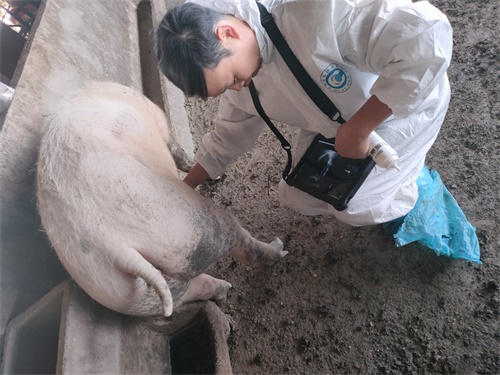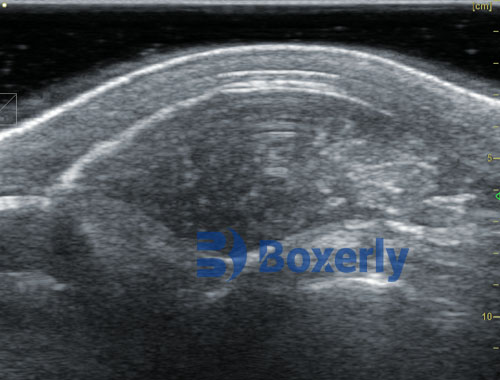If you’ve ever raised livestock, managed a breeding kennel, or even volunteered at an animal rescue, chances are you’ve wondered at some point: Can I buy my own ultrasound machine for animals? The short answer is yes—you absolutely can. But the better question is should you, and if so, what does it really take to make the most of that technology?
These days, portable Veterinary ultrasound systems are more accessible than ever. Prices have dropped, image quality has improved dramatically, and many brands even offer wireless models that can connect directly to your phone or tablet. No longer are these tools limited to veterinary clinics—they’re being used in barns, fields, stables, and even home breeding setups.

But before you hit that “buy now” button, let’s talk about what it really means to own and use your own vet ultrasound machine—and why a growing number of farmers, breeders, and animal care pros are doing exactly that.
Why Would Someone Want Their Own Vet Ultrasound Machine?
For livestock farmers, timing is everything. Knowing exactly when a sow is pregnant, whether a ewe is carrying twins, or if a heifer is recovering well after birth isn’t just nice information—it affects feed schedules, barn space, and income.
Imagine this: you’ve got 50 sheep and your breeding season is tightly controlled. Waiting until an outside vet can come to check for pregnancies could delay your feeding adjustments by weeks. But with your own scanner? You could confirm pregnancy as early as 21 days with the right technique and training.
For dog breeders, the benefits are just as clear. Ultrasound can reveal fetal heartbeat, uterine fluid abnormalities, and litter size estimates early in gestation. That information helps avoid emergencies and plan for C-sections or extra support if needed.
And in equine settings, the ability to confirm ovulation timing or diagnose early pregnancy loss can make or break a season.
So whether it’s about economics, care quality, or convenience—it’s no wonder more people are taking ultrasound into their own hands.
Do I Need to Be a Vet to Use One?
Nope. In many countries (including the U.S., UK, Australia, and Canada), you don’t need to be a licensed vet to own or use an ultrasound machine on your own animals. However, there are important caveats:
Diagnosis: In most jurisdictions, only licensed veterinarians are allowed to officially diagnose a condition or prescribe treatment based on an ultrasound.
Training: Just because you can own one doesn’t mean you’ll instantly understand what you're seeing. Interpretation takes some learning. Luckily, many suppliers offer online training or include usage tutorials when you buy a system.
Animal welfare: Misuse can cause stress or harm. So even if you don’t need a license, you do need a strong sense of responsibility.
In fact, many livestock farmers around the world already use ultrasound themselves—not to replace their vet, but to make smarter day-to-day decisions and better prepare for when they do need professional help.

What Types of Ultrasound Machines Are Available for Non-Vets?
There’s a surprising variety out there, depending on the animal type, scanning purpose, and your experience level.
Handheld portable ultrasound
These are lightweight, mobile units that fit in your pocket or attach to your phone. Some models, like the BXL-V50, offer high-resolution black-and-white imaging, built-in Wi-Fi, and compatibility with linear, convex, and transrectal probes. These machines are popular with farmers who need to scan sheep, goats, pigs, or cattle on the go.
Tablet-Based Ultrasound
These look like rugged tablets and often come with better screen resolution and dual-probe support. They’re great for breeders or those working in dusty, outdoor environments.
Laptop-Style Ultrasound
Still portable but more powerful, these machines offer detailed imaging and extra settings for fetal development, tissue quality, or reproductive tracking. They’re often used in equine practices or larger breeding operations.
Can I Really Learn to Use It Myself?
Yes, with time and a bit of commitment.
Learning to use an animal ultrasound machine isn’t like becoming a radiologist, but it does take practice. The key things to master include:
Understanding animal anatomy (especially the reproductive tract)
Probe positioning and angle
Reading the grayscale image output
Knowing when you’re seeing fluid, muscle, bone, or fetus
Most beginner mistakes come from poor contact (not enough gel), moving the probe too fast, or misunderstanding structures. That’s why it’s smart to start with training videos, online courses, or even booking a few hours with a local vet who can give you hands-on tips.
In the end, it's not about becoming a vet—it's about becoming confident with the tools that make your operation more efficient.
What Can You Actually See With One?
Depending on the species and timing, a vet ultrasound can help you spot:
Early pregnancy (as soon as 21 days in cows, 25 in sheep, 30 in dogs)
Fetal heartbeat
Litter size estimations (mostly in dogs and pigs)
Twin pregnancies
Retained fetal materials post-birth
Cysts, fluid buildup, or uterine infection
Ovary activity (in breeding season monitoring)
backfat thickness and loin-eye area (in swine and beef cattle)
These insights can help you feed animals according to actual need, identify reproductive issues early, and optimize breeding timing.

What About the Cost?
Ten years ago, vet ultrasound machines were mostly for hospitals and cost $10,000 or more. Today, with brands like Boxerly offering efficient models like the BXL-V50, even a small farm can afford a quality machine.
Here’s a rough breakdown:
Entry-level handheld (black & white): $1,000–$2,000
Color Doppler or tablet-based: $3,000–$5,000
High-end, multi-probe systems: $6,000+
Prices vary based on probe type, software features, battery life, and whether it includes training or support. But even a basic unit can deliver huge value when used regularly.
Any Risks or Downsides?
Yes—mainly related to misuse or overconfidence.
False positives or negatives can occur if the operator lacks experience.
Over-reliance on imaging may cause people to delay calling a vet.
Animal stress from improper handling is a real concern—training in gentle restraint and probe placement is key.
That said, when used responsibly, a personal ultrasound system is more of a complement than a replacement for veterinary care. It’s like owning a thermometer—you’re not diagnosing the flu, but you are giving yourself better information.
Real-World Examples
Sarah, a goat farmer in Texas, uses her ultrasound to confirm pregnancies at 30 days. “I used to guess based on size or udder, and I got it wrong a lot. Now I can tell at a glance—and I plan my kidding pens way better.”
Tim, a hobby dog breeder in the UK, checks his bitches around week 4 of gestation. “It’s saved me vet bills and anxiety. I still go to the vet for final checks, but early on, I like to know.”
Maria, who runs a cattle ranch in Argentina, says her device paid for itself in a year. “We identify open cows faster and cull or re-breed. Less wasted feed, less lost time.”
Final Thoughts: Should You Get One?
If you care for multiple animals, have basic anatomical knowledge, and are willing to invest a little time learning, then yes—having your own vet ultrasound machine can be a game-changer.
It brings flexibility, cost savings, better planning, and peace of mind. Just be sure to choose the right model for your needs, get proper training, and use it as a tool—not a substitute for professional care.









